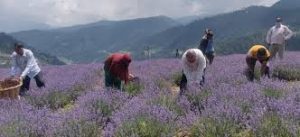Today Current Affairs: 3rd March 2021 for UPSC IAS exams, State PSC exams, SSC CGL, State SSC, RRB, Railways, Banking Exam & IBPS, etc
Table of Contents
Hurun Global Rich List 2021:

10th edition of Hurun Global Rich List 2021 was released recently.
Key findings:
- The world added 607 new billionaires or more than three billionaires in two days.
- India added 55 new billionaires, or more than one billionaire every week, in 2020.
- Tesla’s Elon Musk added $151 billion to become the richest man in the world for the first time with a net worth of $197 billion, followed by Amazon’s Jeff Bezos ($189 billion), the chairman and CEO of LVMH Moet Hennessy.
- Reliance Industries Chairman Mukesh Ambani, who emerged as the richest man in India with a net worth of $83 billion, came in at number eight.
- India retained the third spot in the number of billionaires from a country with a total of 177 billionaires living in the country.
- In the list of Indian billionaires, Mr. Ambani was followed by Adani Group’s Gautam Adani and family with his wealth almost doubling to $32 billion.
- Country-wise, China leads with the most number of billionaires at 1058, followed by the US (696), India (177), Germany, the United Kingdom, and Switzerland at over 100 each.
- By continent, Asia accounts for 51 percent of the billionaires.
- Among cities, Mumbai hosts the maximum number of billionaires (60), followed by New Delhi (40) and Bengaluru (22).
Species Recovery Programme:

The National Board for Wildlife and Union Ministry of Environment, Forest and Climate Change last month included the caracal, a medium-sized wildcat found in parts of Rajasthan and Gujarat, in the list of critically endangered species. The recovery programme for critically endangered species in India now includes 22 wildlife species.
Caracal – Wild Cat
- Besides India, the caracal is found in several dozen countries across Africa, the Middle East, Central and South Asia.
- While it flourishes in parts of Africa, its numbers in Asia are declining.
- The wildcat has long legs, a short face, long canine teeth, and distinctive ears — long and pointy, with tufts of black hair at their tips.
- The iconic ears are what give the animal its name — caracal comes from the Turkish karakulak, meaning ‘black ears’. In India, it is called siya gosh, a Persian name that translates as ‘black Ear’.
- It finds mention in Abul Fazl’s Akbarnama, as a hunting animal in the time of Akbar (1556-1605).
- Descriptions and illustrations of the caracal can be found in medieval texts such as the Anvar-i-Suhayli, Tutinama, Khamsa-e-Nizami, and Shahnameh.
About the Species Recovery Programme:
- It is one of the three components of the Integrated Development of Wildlife Habitats (IDWH).
- IDWH was started in 2008-09 as a Centrally sponsored Scheme. It is meant for providing support to protected areas (national parks, wildlife sanctuaries, conservation reserves and community reserves except tiger reserves), protection of wildlife outside protected areas and recovery programmes for saving critically endangered species and habitats.
Purple Revolution Under Aroma Mission:

Around 500 farmers across villages in Doda district in Jammu had their incomes quadrupled after shifting from maize to lavender cultivation which is being called the purple revolution. It was possible due to initiatives taken under Aroma Mission.
Purple Revolution (Under Aroma Mission):
- First-time farmers were given free lavender saplings and those who have cultivated lavender before were charged Rs. 5-6 per sapling.
- Aim: To support domestic aromatic crop-based agro-economy by moving from imported aromatic oils to homegrown varieties.
- The main product is Lavender oil which sells for at least Rs. 10,000 per litre
- Lavender water, which separates from lavender oil, is used to make incense sticks.
- Hydrosol, which is formed after distillation from the flowers, is used to make soaps and room fresheners.
- Council of Scientific and Industrial Research (CSIR) and Indian Institute of Integrative Medicine, Jammu (IIIM Jammu), the two bodies are mainly responsible for making the purple revolution under the Aroma Mission a success.
Nationally Determined Contributions (NDC) Synthesis Report:

The UNFCCC, in its Nationally Determined Contributions (NDC) Synthesis Report, has called for more ambitious climate action plans by the countries in order to achieve the Paris Agreement target of containing global temperature rise to 2°C (ideally 1.5°C) by the end of the century.
- The report was sought ahead of the 26th session of the Conference of the Parties (COP 26) to the UNFCCC which is scheduled to take place from 1st-12th November 2021, in Glasgow, UK.
- NDCs are at the heart of the Paris Agreement and embody efforts by each country to reduce national emissions and adapt to the impacts of climate change. Each NDC reflects the country’s ambition, taking into account its domestic circumstances
- The NDC Synthesis Report covers submissions up to 31st December 2020 and includes new or updated NDCs by 75 Parties, which represent approximately 30% of global greenhouse gas emissions.
Findings:
- The United Kingdom and the European Union are the only regions among 18 of the world’s biggest emitters that have significantly increased their greenhouse gas (GHG) reduction targets.
- Sixteen of the world’s biggest emitters have not increased their emission reduction targets substantially or at all.
- Adaptation Action and Economic Diversification:
- More countries reported on mitigation co-benefits of adaptation action and economic diversification plans.
- Adaptation actions and economic diversification plans with mitigation co-benefits include climate-smart agriculture, adapting coastal ecosystems, increasing the share of renewable sources in energy generation, carbon dioxide capture and storage, fuel switch and fuel price reforms in the transport sector, and moving to a circular economy for better waste management.
Registration Of Political Parties:

Registration of political parties is governed by the provisions of section 29A of the Representation of the People Act, 1951.
- A party seeking registration under the said section with the Commission has to submit an application to the Commission within a period of 30 days following the date of its formation as per guidelines prescribed by the Commission in the exercise of the powers conferred by Article 324 of the Constitution of India and Section 29A of the Representation of the People Act, 1951.
- As per existing guidelines, the applicant association is, inter-alia asked to publish the proposed Name of the party in two national daily newspapers and two local daily newspapers, on two days for submitting objections, if any, with regard to the proposed registration of the party before the Commission within 30 days from such publication.
- The Commission has announced the General Elections for the Legislative Assemblies of West Bengal, Assam, Tamil Nadu, Kerala, and Puducherry on 26.02.2021.
- The Election Commission has given relaxation and has reduced the notice period from 30 days to 7 days for the parties who have published their public notice on or before 26.02.2021.
World Wildlife Day:

In 2013, the United Nations General Assembly (UNGA) proclaimed 3 March – the day of signature of the Convention on International Trade in Endangered Species of Wild Fauna and Flora (CITES) in 1973 – as UN World Wildlife Day to celebrate and raise awareness of the world’s wild animals and plants.
- The UNGA resolution also designated the CITES Secretariat as the facilitator for the global observance of World Wildlife Day.
- The theme this year: “Forests and Livelihoods: Sustaining People and Planet”.
About CITES:
- The Convention on International Trade in Endangered Species of Wild Fauna and Flora (CITES) is an international regulatory treaty between 183 party states.
- Formed in 1973 and regulates the international trade in over 35,000 wild species of plants and animals.
- The focus of the convention is not solely on the protection of species. It also promotes controlled trade that is not detrimental to the sustainability of wild species.
Engineering Research Policy:

Karnataka has launched the country’s maiden Engineering Research & Development (ER&D) Policy.
- According to industry apex body Nasscom, ER&D has the potential to become a $100-billion industry in the country in the next five years.
- The ER&D sector in the country is the fastest growing industry with a CAGR of 12.8%. Meanwhile, the global engineering research and development industry is expected to reach a spend of $2 trillion by 2025.
Highlights of the new policy:
- It seeks to raise the contribution to the sector in the country to 45% in the next five years.
- It has the potential to create over 50,000 jobs in the ER&D space in five years.
- The policy aims to prepare the State to make use of the future opportunities emanating from this sector.
- It has identified five key focus sectors as aerospace and defense; auto, auto components, and EV; biotechnology, pharma, and medical devices; semiconductors, telecom, ESDM; and software products.
Merchant Digitization Summit 2021

The Government of India, Federation of Indian Chambers of Commerce and Industry (FICCI), and UN-based Better Than Cash Alliance hosted Merchant Digitization Summit 2021: Towards Atma Nirbhar (Self Reliance) Bharat.
- The Summit brought together leaders from the public and private sectors to accelerate responsible digitization of merchants in India’s North-Eastern and Himalayan regions and Aspirational districts.
Highlights of the Summit:
- Empowering women merchants who play critical roles in their communities is one of the priorities to help achieve the mission of Digital India.
- The National Language Translation Mission can be used to disseminate digital payment information, privacy clauses, and consent in local languages for trust and empowerment.
- Identified opportunities to address the challenges of connectivity, access to smartphones, and digital literacy for merchants at the last mile.
- Along with the increased focus on ‘Make in India’ through Atmanirbhar Bharat Scheme, responsible digitization must more strongly include rural networks such as Self Help Groups and community enablers.
- This will lead to the creation of the local digital ecosystems to help millions of merchants join the formal economy, access credit, and grow their business.
- From an average of 2-3 billion digital transactions monthly, India has set an ambitious target for 1 billion digital transactions per day.
- Person to Merchant (P2M) digital payment transactions will scale to 10-12 billion transactions every month to contribute to India’s digital economy.
Central Revenues Control Laboratory (CRCL):

Central Revenues Control Laboratory (CRCL), New Delhi was recognized as a Regional Customs Laboratory (RCL) of the World Customs Organisation (WCO) for the Asia-Pacific Region.
- Central Revenues Control Laboratory (CRCL), New Delhi is under the administrative control of the Central Board of Indirect Taxes & Customs.
- Established in 1939, CRCL is the headquarters of 14 Revenue Laboratories, including 2 laboratories working at Government Opium & Alkaloid Works, Ghazipur & Neemuch.
- With its recognition as RCL, CRCL joins a select group of Customs Laboratories in the region like those in Japan & Korea.
- The World Customs Organization (WCO), established in 1952 as the Customs Co-operation Council (CCC) is an independent intergovernmental body whose mission is to enhance the effectiveness and efficiency of Customs administrations.
- It is headquartered in Brussels, Belgium.




